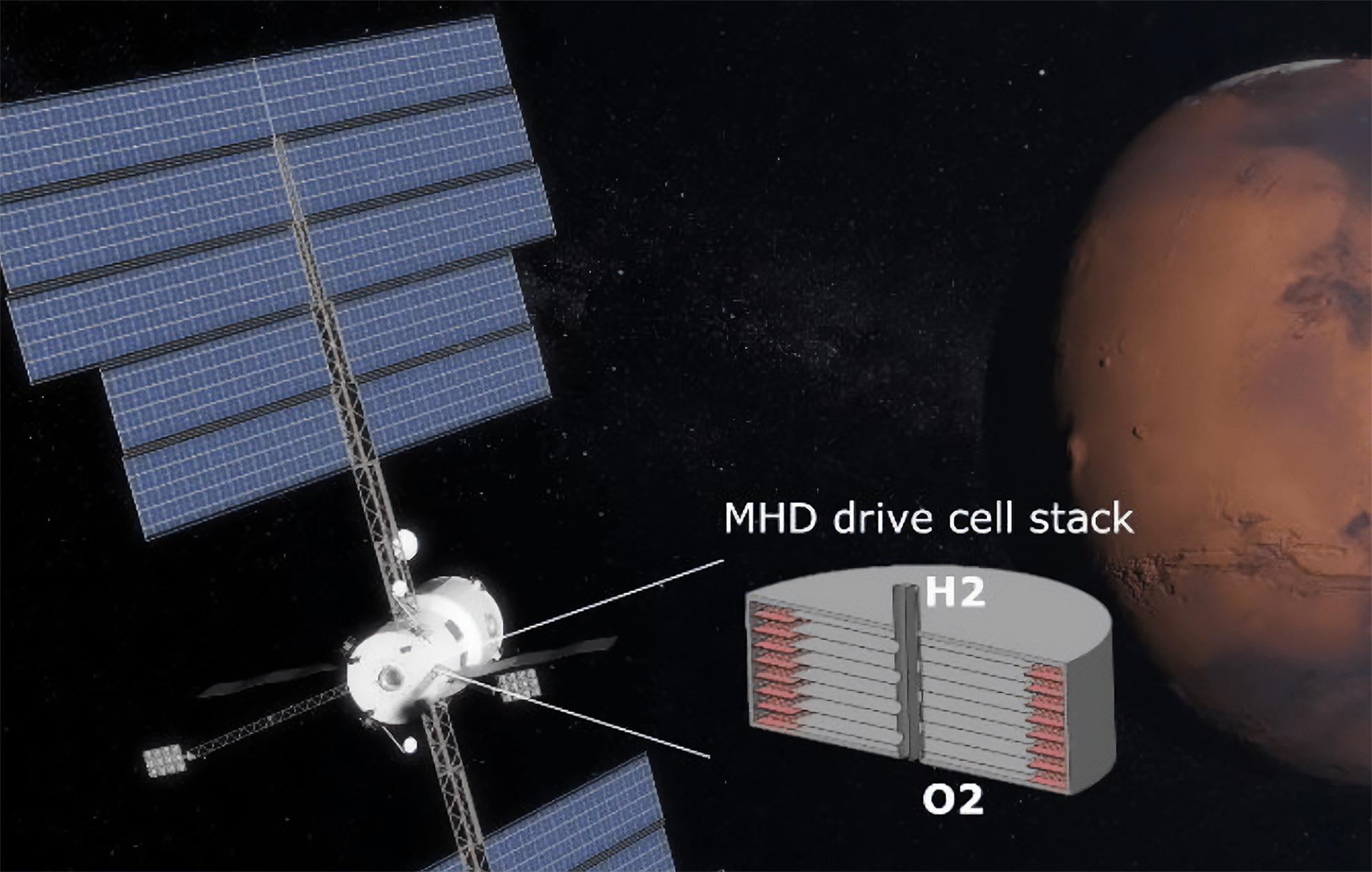Alvaro Romero-Calvo
Georgia Tech Research Corporation
Human space exploration is presented with multiple challenges, such as the near absence of buoyancy in orbit or the reliable, efficient, and sustainable operation of life support systems. The production and management of oxygen and hydrogen are of key importance for long-term space travel and, in particular, for the human transfer to Mars. However, existing technical solutions have failed to meet the reliability and efficiency levels required in such scenarios.
As an alternative, we propose an efficient water-splitting architecture that combines multiple functionalities into a minimum number of subsystems, hence enhancing the overall reliability of the mission. This new approach employs a magnetohydrodynamic electrolytic cell that extracts and separates oxygen and hydrogen gas without moving parts in microgravity, hence removing the need for a forced water recirculation loop and associated ancillary equipment such as pumps or centrifuges. Preliminary estimations indicate that the integration of functionalities leads to up to 50% mass budget reductions with respect to the Oxygen Generation Assembly architecture for a 99% reliability level. These values apply to a standard four-crew Mars transfer with 3.36 kg oxygen consumption per day.
A dedicated study is required to assess the feasibility of the concept and its integration into a suitable oxygen production architecture, motivating this proposal. Its successful development would effectively enable the recycling of water and oxygen in long-term space travel. Additional technologies of interest to NASA and the general public, such as water-based SmallSat propulsion or in-situ resource utilization, would also benefit from the concepts introduced here. Georgia Tech Research Corporation will collaborate with commercial partner Giner Labs, a leader in space flight electrolysis R&D, to execute this project.




























